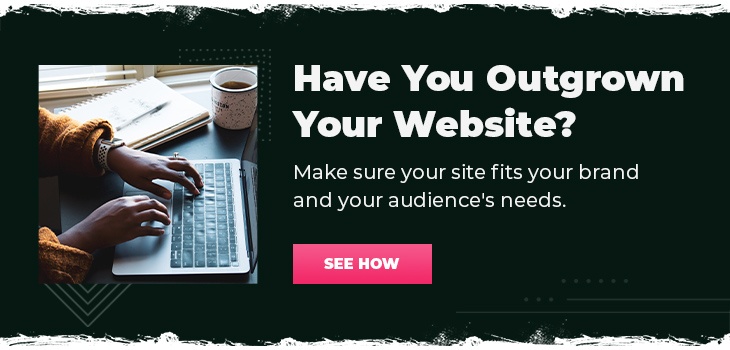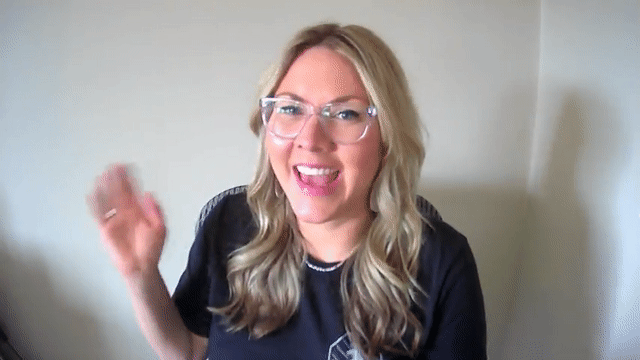In a previous blog, our Director of Client Services Kate Cygan laid out 5 top of funnel marketing tactics to help you generate leads and draw your target audience to your website. Now, she’s ready to take it one step further.
The value of all those awareness stage leads is in their potential to convert into customers. And, as you probably know, most people need a nudge or two to make that leap. In this post, we’ll cover a handful of lead conversion strategies that you can use to encourage leads to move deeper into your marketing funnel and make that purchase decision.
“It’s important to keep in mind that these leads are still in the awareness stage,” Kate reminds us. “You likely won’t be able to make a hard sale quite yet. Instead, focus on directing them to areas with more value so they continue building trust in your brand.”
Kate advocates for the following five conversion strategies when working with top of funnel leads.
Effective Website Design
Web design isn’t just about making your website look professional or enticing, it can also help with lead conversion. The navigational flow of your website should make information easy for users to find and support their buyer’s journey.
“You want to offer the information they need, along with helping them navigate to the right product or service for them based on their interests and where they are in their journey,” Kate notes.
Think about how new leads will interact with your website. What landing page does your lead generation strategy point them toward? What information do they need to take the next step? How do they decide which of your services will solve their problem?
Everything about your website should exist to answer questions like these. Kate recommends you consider how your navigation menu is structured, the messaging and language you use throughout your website copy and how images or infographics could help clarify ideas or demonstrate how to become a customer.
“As you guide people further into your sales funnel with valuable content, you’re also building trust with them,” Kate says. She notes that when you can answer a potential customer’s questions and offer real value without requiring a commitment, they’ll see that you’re more invested in solving their problems than making a sale.
Linking Strategy
A linking strategy—particularly internal linking—is a helpful way to convert leads through content marketing. “It’s almost like a type of lead nurturing,” Kate says. “The idea is to continue providing value by directing leads to other blog posts so they have all the information they need to make a purchase decision.”
With an internal linking strategy, you’re creating a “rabbit hole” effect as people read your content. Areas that might raise a new question in their mind get a link to another piece of content that offers an answer. The more they read, the more questions they have, the more answers you give, until their journey eventually leads to one of your product or service pages.
“It’s important to remember that very few of your internal links will go to sales pages,” Kate notes. “Most of them should go to helpful content like blogs, reviews, or how to guides. Remember: the goal is to provide value above all else.”
Although internal linking directly relates to the conversion process, external linking is just as important. “Providing links to authoritative websites that back up what you’re saying allows you to borrow their expertise and gives your readers a chance to learn more about the topic,” Kate says.
She adds that you should be judicious about where you choose to insert external links. If you send people away from your website too often, Google might not view your site as an authority and that could affect your rankings in search results. External links are best used when:
- referencing information from another source
- citing statistics or quantitative data
- to offer information about a topic outside of your brand’s expertise
“Pay attention to what kind of external links you’re using,” Kate suggests. “If you find yourself frequently needing links to information about your industry or niche, then try to start creating content around those topics. That will allow you to use internal links instead of sending readers away from your page.”
Mid-page Engagements
Another way to keep people moving through your funnel is to include mid-page engagements throughout your content. This might be downloadable content, newsletter signup forms, links to your product or service and even opportunities to schedule a phone call with a sales rep.
“It’s important to have engagements that target each part of the funnel,” Kate notes. “This ensures you’re creating conversion points by providing next steps for users regardless of where they are in their journey.”
The goal of using mid-page engagements is to encourage users to interact with your brand. Kate adds that you can tailor which engagements you use to the purpose of that piece of content. For example, in an educational blog, you could include a recorded webinar download. Or in a news article about your brand, you could add a newsletter signup form to keep in touch with readers and enroll them in relevant email marketing campaigns.
“Especially when using forms, it’s important to remember that what you require from users should reflect the value you’re offering,” Kate says.
For example, if you want them to download a helpful checklist, you shouldn’t require their first and last name, email, phone number, company name and their birthday. No one wants to go through that just for a one-pager. Instead, ask for their name and email address and gather information gradually with each follow up—always offering value in return.
Calls to Action
When people are new to your brand, they don’t always know the next step to take if they want to become a customer. That’s where your CTAs come in. A call to action gives concise, clear instructions on what you want them to do next and ideally moves them into the next stage of the buyer’s journey.
Your CTAs can come in all shapes and sizes. It just depends what step you want your website visitors to take. Some examples include:
- “Download the guide”
- “Book your free consultation”
- “Read our other blogs”
- “Check out these testimonials”
The metrics from these buttons, cards and links can even help with qualifying leads. Your sales team will be able to identify which users are engaging with the CTAs and ready to move onto the next step in the sales process and which ones need a little more time.
“Nothing scares off a warm lead like a preemptive sales call,” Kate says. “Instead, you want to give them opportunities to come to you. Use your CTAs to foster engagement and only reach out personally when they’re ready to hear from you.”
Reduce friction
Humans might not be lazy, but we sure don’t like working harder than we have to. That’s why reducing friction points across your website and sales process is key to converting leads. People can use any little inconvenience or obstacle to talk themselves out of making a purchase, and you don’t want to give them that opportunity.
“You want a seamless experience for your users,” Kate instructs. “Try to take away any unnecessary work or effort on their part by making navigation, sign-ups and purchasing easy.”
The easiest way to reduce friction for users is to take out any extra steps between where they are and where they want to be or what they want to get. This could mean making links open in new tabs so they have access to both their current page and what they want to read next. Or it could mean having content automatically downloaded when they hit “submit” on a form.
The “buy now” button is another classic example of reducing friction. It keeps people from staring at the subtotal in the checkout and significantly reduces the number of clicks between a buying decision and the actual purchase.
If you aren’t sure where the friction points on your website are, Kate recommends doing a quick usability test. “This doesn’t have to be a formal focus group or anything,” she adds. “Get a few of your team members to click around your website and have them identify pages or situations where they’d likely leave your site and explain why. This can give you great insights into where users might be getting stuck in your funnel and how you can resolve those friction points.”
Let Value Be Your Guide
Converting leads in the top of your sales funnel requires a unique approach. You want to keep your focus on providing value, offering engagement opportunities and reducing friction throughout their buyer’s journey. As they move through the resources on your website, you’ll be building trust and forming a relationship that eventually makes them confident enough to choose you.
Want more of Kate’s client services expertise? Check out her blog about the 5 Things Every Website Strategy Needs!








